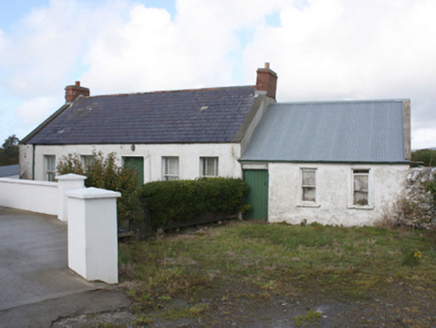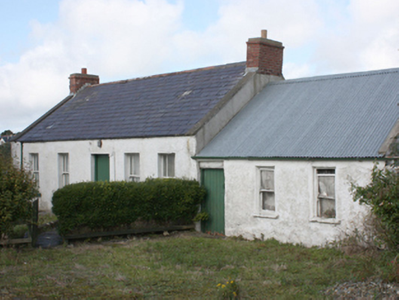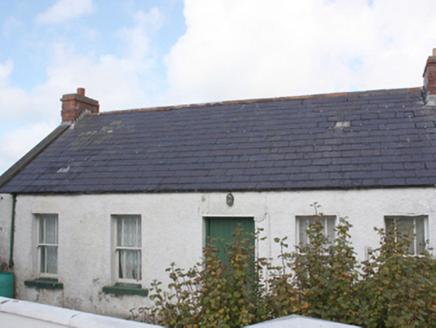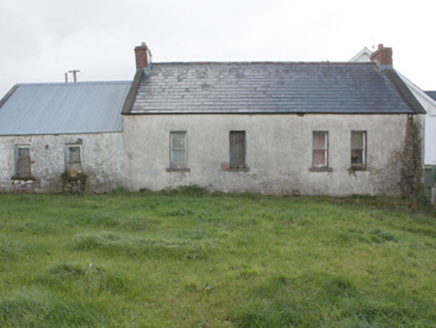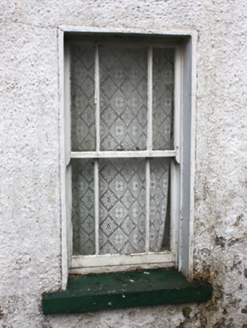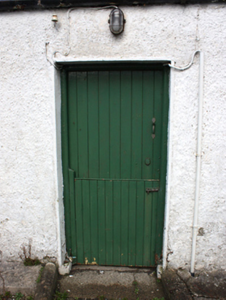Survey Data
Reg No
40805025
Rating
Regional
Categories of Special Interest
Architectural
Original Use
House
Date
1860 - 1900
Coordinates
247676, 445907
Date Recorded
08/10/2008
Date Updated
--/--/--
Description
end. Pitched natural slate roof with terracotta ridge tiles, red brick chimneystacks and raised rendered coping to gable ends (east and west), and with cast-iron rainwater goods. Pitched corrugated-metal roof to block to east having raised rendered verge to the east gable end. Roughcast rendered walls; whitewashed rubble walls to block to east. Square-headed window openings with smooth rendered reveals, painted stone sills, and one-over-one pane timber sliding sash windows with margin glazing bars; square-headed window openings to rear elevation (north) and to block to the east having one-over-one pane horned timber sliding sash windows. Central square-headed door opening with smooth rendered reveals and battened timber double-doors. Set back from road with hedging to front of property. Modern bungalow, and two vernacular houses adjacent to the south. Ruinous mill building to the south-west of site. Located to the north-east of Carndonagh, adjacent to the east bank of the Glennagannon River.
Appraisal
This attractive small-scale house, of late nineteenth-century appearance, retains its early form and character. Its visual expression and integrity is enhanced by the retention of much of its salient fabric including timber sliding sash windows and a natural slate roof. The distinctive sash windows with margin glazing bars are a feature of many buildings in the Carndonagh area, suggesting, perhaps, a local fashion at the time of installation. Its form and symmetry suggests a relatively late date for a vernacular dwelling. The attached block to the east end may be part of an earlier house to site that was demolished\partially demolished to be replaced by the present house (Ordnance Survey first edition map of c. 1837). This building forms part of a group of vernacular dwellings at Mill Town along with two thatched vernacular houses to the south (see 40805026 and 40805027) that were probably originally associated with the ruinous former corn mill to the south-west. This building is an interesting addition to the extensive vernacular heritage of Inishowen, and is an attractive feature in the rural countryside to the north-east of Carndonagh.
